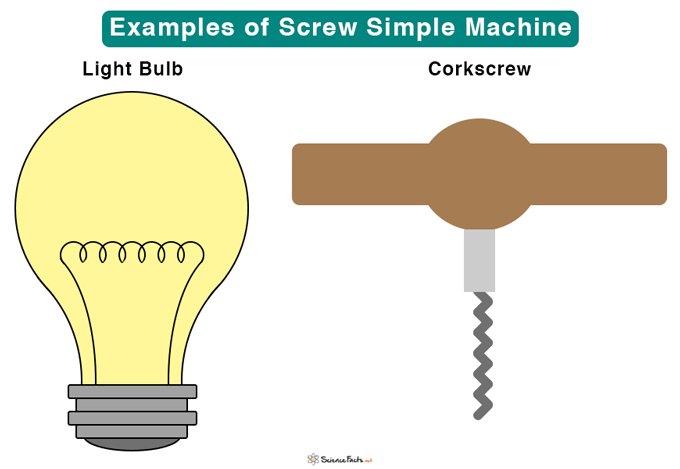Parts of a Screw
How Does a Screw Work
Mechanical Advantage of a Screw
Types of Screw
Examples of Screw
Applications and Uses of a Screw
Mechanical Advantage = Output force/ Input force Since the applied force is multiplied, the output force is greater than the input force. Hence, the mechanical advantage is greater than one. The mechanical advantage of a screw depends upon the pitch. A narrower pitch requires lesser effort to drive a screw than a wider pitch. However, the number of turns is higher. Another purpose of a screw is to drill holes on a surface using an electric device. However, unlike a conventional screw, it does not permanently stay on the surface. It scoops out a piece of material from the surface. This type of screw is known as a drill bit and has a pointed end.


